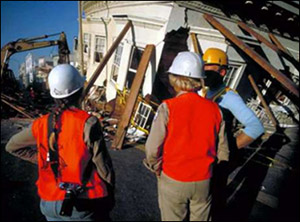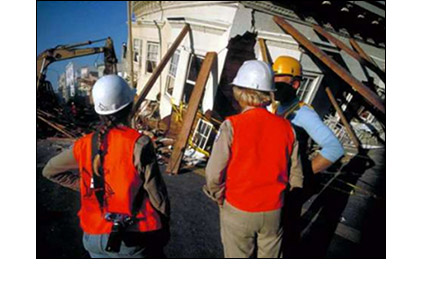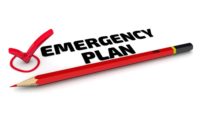 Think you don’t have to worry about earthquakes? According to OSHA’s new Earthquake Preparedness in the Workplace web page, all 50 states, U.S. territories, and the District of Columbia are at some risk for earthquakes, which can occur at any time of the year.
Think you don’t have to worry about earthquakes? According to OSHA’s new Earthquake Preparedness in the Workplace web page, all 50 states, U.S. territories, and the District of Columbia are at some risk for earthquakes, which can occur at any time of the year.
At highest risk: buildings or trailers and manufactured homes not tied to a reinforced foundation anchored to the ground, since they can be shaken off their mountings during an earthquake.
Fault lines and action plans
OSHA is encouraging employers to be aware of conditions that affect their workplaces, especially those at particular risk that are near fault lines or volcanoes. Employers should train workers on workplace evacuation and emergency action plans, and keep on hand emergency supplies such as battery-operated emergency radios and first aid kits. In the aftermath of disasters, employers must ensure that workers involved in response and recovery operations are protected from potential safety and health hazards.
Earthquakes can cause deaths and injuries as well as extensive property damage. Ground movement during an earthquake is seldom the direct cause of death or injury. Most earthquake-related injuries result from collapsing walls or floors, flying glass, and falling objects as a result of the ground shaking or people trying to move more than a few feet during the shaking.
Damage is preventable
Much of the damage in earthquakes is predictable and preventable, says OSHA.
The agency’s Preparedness page discusses ways for employers and workers to prepare for an earthquake by developing an emergency response plan and conducting workplace training. Preparedness includes planning for an earthquake before it occurs, equipping workers with information and emergency supply kits, training, and implementing preparedness plans.
The Response/Recovery page provides useful details on the hazards to avoid after an earthquake. This includes areas to avoid when using a vehicle, and safety and health hazards arising from collapsing walls, falling objects and debris, for example.
For more information, visit OSHA's Emergency Preparedness and Response page.



